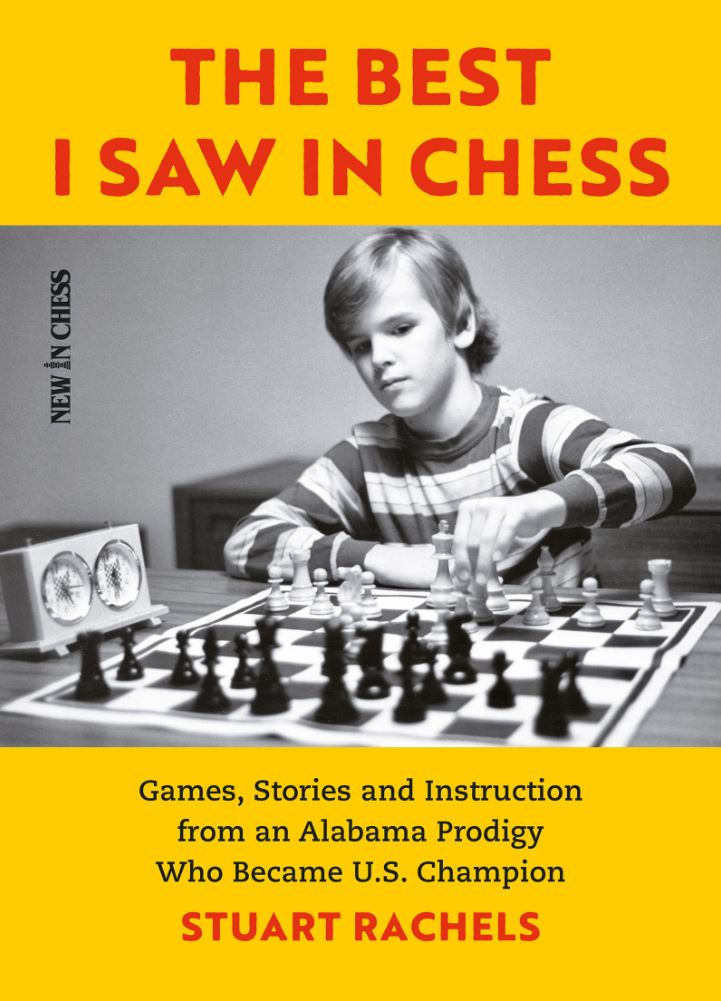Parking the prelate
When a football manager comments that the opponents “parked the bus” in front of their goal, there is presumably some implied unease at their desecration of the beautiful game, but an acknowledgement of the enemy’s strategic plan to rely on defence and hope to counterattack.
Today, on the chessboard, I’m looking not at a strategic but a tactical thrust which in honour of the (slightly whingy) maestri I’m dubbing “Parking the prelate”.
This came to mind following a rather beautiful victory by Ian Nepomniachtchi against Vladislav Artemiev in one of the internet tournaments a couple of months ago:
This reminded me of an old game by Misha Tal, though when I looked it up and consulted my learned silicon friend it turns out that ...Bb1! while a good move should only have been enough to draw:
I decided to look for more instances of Bb1 v Ra1 and went through MegaBase, though the method I used — putting a board with WRa1 BBb1 — in the search mask didn’t differentiate between Bb1 and Bxb1. As a result I got a very large number of games, and so refined the search by putting a minimum rating in. Most were dross with the bishop capturing a knight in the opening or some with a black pawn already on a2 (which makes Bb1 totally unsurprising), but I did find a few more interesting ones:
Select an entry from the list to switch between games
The tower of time and motion
A fortnight ago I presented a fantastic problem here, which was discovered by the French-Canadian computer scientist François Labelle from the output of his program. It is to construct a game ending in 7.Rc7 mate with the black king on d7.
 The problem was passed on to me by American IM Stuart Rachels, who said that it was stellar, and of course I was unable to resist starting work on it. It was nearly a week before I finally succeeded, and I’m delighted to have been able to publish it with the solution here for the first time.
The problem was passed on to me by American IM Stuart Rachels, who said that it was stellar, and of course I was unable to resist starting work on it. It was nearly a week before I finally succeeded, and I’m delighted to have been able to publish it with the solution here for the first time.
I know that this is a minority interest, and indeed just a single reader got in touch with me about it: Edwin Wong, who solved it after I sent him a couple of opaque hints — many congratulations to him!
What I would like to do is to introduce the genre to a wider audience, and I hope to enthuse you. Although the stipulation has nothing to do with playing chess as such, it does demand a very high degree of optimization of the pieces — well beyond what normally occurs in a real game, albeit with a completely different aim. So I thought I’d explain how I went about it.
The first thing is to look at the obvious plan of playing d5, Kd7, Qe8, Nc6-d8 and c6. Something like 1.d4 d5 2.a4 Kd7 3.Ra3 Qe8 4.Rc3 Nc6 5.Bf4 Nd8. Unfortunately, Black needs two more moves here — c6 and e6 — and it just doesn’t work (and given that it’s a stellar problem, you know perfectly well that it won’t).
The solution is going to have to be a dance in which both sides achieve their aims, thus I wondered about a pawn promotion with c8=R-c7 supported by Bf4, but this also fails because Black has to play a move early on for the pawn to get onto the c-file — say 1.d4 c5. You can reach the c-file after e4 via d5 and c7, but then the queen on d1 has no way to support it in one move.
I looked at ways to accelerate the process and found some near misses in which the c-file is blasted open:
1.d4 c5 2.Bg5 cxd4 3.c3 dxc3 4.Nxc3 e6 5.Qxd7+ (5.Nb5 d5 6.Rc1 Kd7) 5...Kxd7 6.Rc1 Qe8 7.Nb5
Either Black or White ends up a tempo short.
Later I also looked at trying to double the rooks on the c-file and got this one:
1.h4 e6 2.a4 Qxh4 3.Rxh4 c5 4.Ra3 c4 5.Rxc4 d6 6.Rac3 Kd7 7.Rxc8
At some point, I started wondering about double checks which obviate the need to put a piece on e8. There was a sequence which “nearly worked” and sent me crazy for a couple of days.
 On this DVD Dorian Rogozenco, Mihail Marin, Oliver Reeh and Karsten Müller present the 8. World Chess Champion in video lessons: his openings, his understanding of chess strategy, his artful endgame play, and finally his immortal combinations.
On this DVD Dorian Rogozenco, Mihail Marin, Oliver Reeh and Karsten Müller present the 8. World Chess Champion in video lessons: his openings, his understanding of chess strategy, his artful endgame play, and finally his immortal combinations.1.e4 d6 2.Qf3 (2.Qh5-c5 comes to the same thing) 2...Be6 3.Qc3 Bxa2 4.Bb5+ and Be6 is illegal, while if 4...c6, Ra6 is illegal. The idea is 4.Bb5+ Be6!?! 5.Ra6 c6 6.Rxc6 Kd7 7.Rc7 mate.
Instead, you can arrange to capture on a2 with the black queen, but then there’s no way to block d8.
At some point I had passed this on to Luke McShane, who after a short time remarked that “this may take several bus journeys”, or something like that. And on, I think, the fifth day I was on the top of a bus when it finally dawned on me how to free a white rook and get the pieces developed sufficiently ergonomically:
1.e4
(or 1 e3)
1...h5!
2.Qxh5 c6
3.Qe5!
(In fact on the bus I momentarily thought, “Oh, Qb5 doesn’t help”, before I remembered that e4 had freed the bishop too).
3....Rxh2
4.Bb5 Rxg2
This is the one I originally saw, though Black can play 4...Rh6, 4...Rh7, or 4...Rh8 — the latter being perhaps the most aesthetic because the rook returns to its starting square.
5.Rh6 d5
6.Rxc6 Kd7
7.Rc7#
Real poetry! You can find many other similar tasks by going to François Labelle’s pages, and a selection have also appeared on the ChessBase site thanks to Stuart Rachel’s efforts, which he passed on to Arne Kaehler.
The ChessBase Mega Database 2020 is the premiere chess database with over eight million games from 1560 to 2019 in high quality. Packing more than 85,000 annotated games, Mega 2020 contains the world‘s largest collection of high-class analysed games. Train like a pro! Prepare for your opponents with ChessBase and the Mega Database 2020. Let grandmasters explain how to best handle your favorite variations, improve your repertoire and much more.
Links


















 The problem was passed on to me
The problem was passed on to me 




